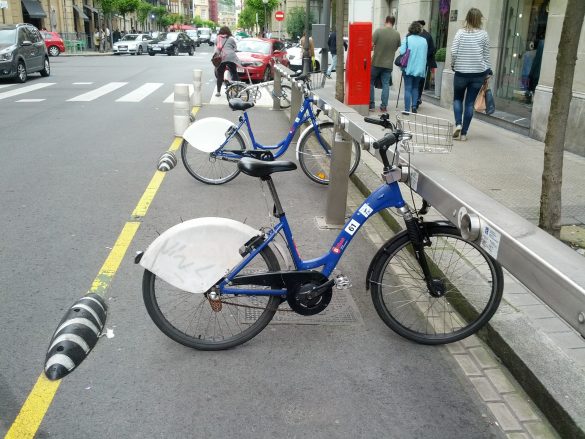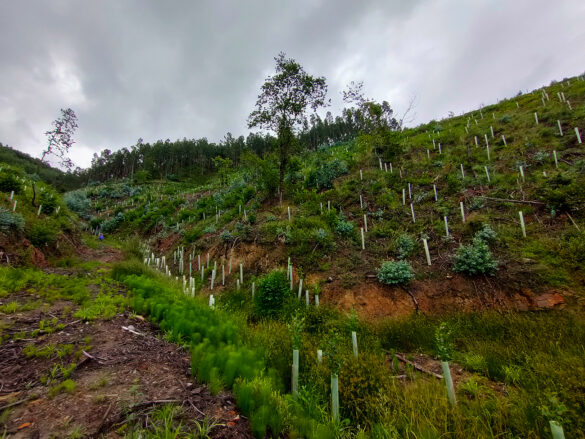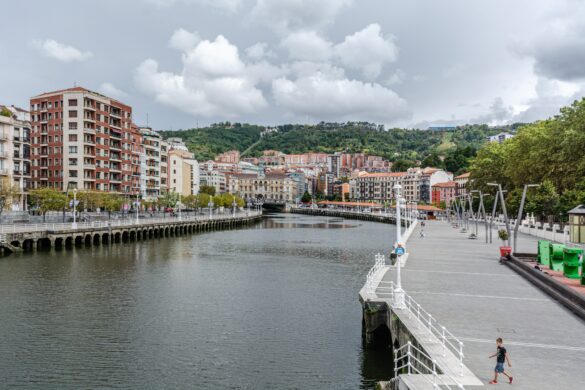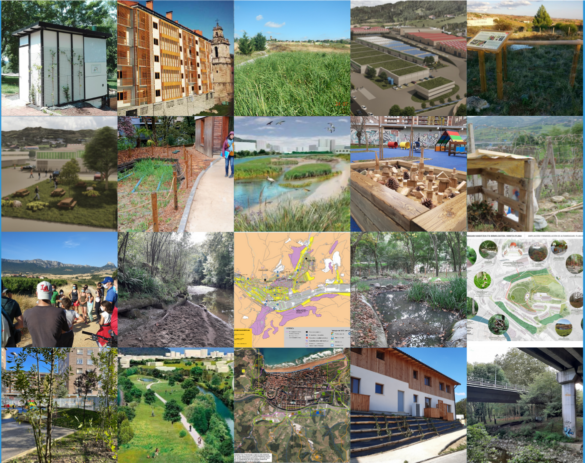Know more about the Basque Country’s vision for 2030 and its implementation strategy
Context
- About the region & About the background / thematic
The Basque Country is home to over 700 species of vertebrates, 1,780 invertebrates and around 7,600 plant species. Forty-six vertebrates are endangered – 21 at risk of extinction -, and 125 species of vascular flora are endangered, with 54 species at risk of extinction.
The different Basque administrations have been promoting the protection of habitats and species for more than 20 years, and as a result of this the Basque Country has seen significant progress in biodiversity policies in recent decades. In this regard, the 2014 Law of Conservation of Nature and the IV Environmental Framework Programme of the Basque Country 2020, approved the same year, are currently the cornerstone of the Natural Heritage policies in this territory.
- About the general commitments / Key Targets in the dossier (SDGs; Climate Change; Biodiversity). E.g. Climate Change – 80% below 1990 levels by 2050
The Biodiversity Strategy of the Basque Autonomous Community 2030 is an initiative with a regional application but with a global vision that is aligned with the Strategic Plan for Biodiversity 2011- 2020, derived from the UN Convention on Biological Diversity, the European Community Biodiversity Strategy to 2020 and the state-level Strategic Plan for Natural Heritage and Biodiversity 2011-2017, documents that also establish a series of goals and actions to address the pressures and threats affecting biodiversity in the international arena.
It is also aligned with the United Nations 2030 Agenda for Sustainable Development, adopted in 2015, Objective 15: “Protect, restore and promote sustainable use of terrestrial ecosystems, sustainably manage forests, combat desertification, and halt and reverse land degradation and halt biodiversity loss”.
Case/ Project/ Initiative
The Basque Government launched the Biodiversity Strategy of the Basque Country 2030, in October 2016, to address the most pressing needs of the natural environment. It was created as a result of the awareness that one of the greatest challenges facing humanity is to conserve and halt the loss of biodiversity and recognise that protecting habitats and species is currently the only guarantee to ensure the future of the planet. To the Basque Country, biodiversity is not only a priority but an essential part of the planning process for its relevance as a source of food, energy, raw materials, air and water. Biodiversity is, furthermore, an important part of their cultural legacy, and contributes to knowledge, health, leisure and tourism.
The Strategy was prepared using a broad citizen participation process, in conjunction with other ministries of the Basque Government, Provincial Councils, and with social and technical stakeholders. It contains four focal points of action to halt the loss of biodiversity: protecting and restoring ecosystems; driving the Natura 2000 Network; promoting knowledge about nature and a nature culture; and efficiency in the management of the territory and the Natural Heritage.
- What are the investments/ BUDGETs?
The operating budget under the Environment Vice-Department for the development of the first Action Plan of the Biodiversity Strategy is around 16.500.000 euros spread over the 4 years during which this will be implemented. Regardless of the budget estimates, the level of activity in each of the years of the first Action Plan of the Strategy will be subject to the budgetary mandates set by the Basque Parliament and the formal processing of the instruments required for the implementation of the Strategy.
- What are the GOALS
The 2030 vision for biodiversity of the Basque Country aims to make a qualitative leap in the biodiversity conservation policies of the region and allow a change in trend in terms of defining and establishing new development models.
The Basque Country improves the conservation status of the natural environment, halting its deterioration through the joint responsibility of all agents, while at the same time the citizens value the richness of the ecosystem services that the natural environment contributes to human well-being. This is essential to bequeath a biodiversity integrated in a resilient territory to future generations.
This vision has led to 4 Goals that are the priority areas for action for the Biodiversity Strategy: to protect and restore ecosystems; to promote the European Natura 2000 Network; to promote the knowledge of nature and cultivate the culture of nature; and, to enhance effectiveness and efficiency in the management of the territory and the natural heritage.
- Who is enrolled / beneficiaries?
An important public participation process preceded the development of the Strategy, the results obtained reflect the views and concerns of the participating individuals, social and technical agents. These stakeholders covered many different areas and sectors and conveyed their particular perceptions. This process also involved the cooperation of different departments of the Basque Government and the Provincial Councils, the municipalities and society in general through meetings, interviews and forums. In the case of the Provincial Councils, given the particular importance of their powers regarding the natural heritage, the Government provided a special emphasis in their involvement throughout the preparation of the Strategy.
- How it works (Priorities/ Steps/ Divisions/ etc)
The vision and lines of action defined in the Strategy seek to set an ultimate goal to be attained in a still distant time horizon (year 2030). To reach this point it, is necessary to specify the short to medium-term actions, which may be updated as new scientific and technical advances occur. Accordingly, the vision defined for 2030 will have intermediate milestones for 2020, at which point the actions to be carried out in the following years will be updated.
To facilitate its implementation, the set of goals established in the Strategy are transformed into 10 lines of action that define where the Basque Country wants to be in 2030, which are implemented in the form of 40 Actions that pave the way to 2020. These efforts guarantee coherence and coordination in the planning of environmental policies within this time frame.
Outcomes
- Achieved Results (Numbers)
In the Basque Country, there are currently 55 sites in the European network of protected areas, Natura 2000. The Basque sites have a surface area of 1,500 square kilometres, which accounts for 23% of our territory and has legal protection status. This means, for example, that 60% of the population of the Basque Country drinks quality water from Natura 2000 Network areas at a cost significantly lower than what it would cost to obtain drinking water from an artificial purification system.
- Main findings/ Lessons Learnt
The Diagnostic Analysis of the Natural Heritage carried out for the development of the Biodiversity Strategy produced very important findings that helped shape the most important goals and actions. Some of them include:
- More than 75% of the habitats of interest to the Basque Country have an unfavourable conservation status because of their decline, fragmentation or deterioration;
- There is insufficient information on the conservation status and trends of species;
- In the Basque Catalogue of Threatened Species there are 202 species listed in the two categories of greatest threat (87 “endangered” and 115 in the “vulnerable” category), representing 2% of those inventoried;
- 23% of the territory has been declared as protected area. The Natura 2000 Network includes a total of 20.5% of the territory;
- The Land Use Planning Guidelines include a territorial model that incorporates green infrastructure as an element that provides a wide range of ecosystem services;
- The agroforestry sector plays a key role in preserving the natural environment and the traditional landscape of the Basque Country, preserving rural communities and maintaining the genetic richness of species and varieties;
- The main pressures that are causing the loss and/or degradation of Natural Heritage and ecosystem services both in Europe and in the Basque Country are the urbanisation of the land, some inadequate agri-forestry and fisheries practices, changing natural conditions, pollution, climate change and Invasive Alien Species.
- Main challenges and how they were overcome, and if not, what are the plans to overcome them.
For some time now, the Basque Government, along with the rest of the public administrations,
have been involved in a long and sustained effort to actively protect and manage the Basque Natural Heritage, with the work carried out in the Natura 2000 Network areas and the management of the conservation of threatened species of flora and fauna being outstanding in recent years.
However, despite the progress that has been made in this environmental sector, there are still many degraded ecosystems, and there is a long journey ahead until the marine and terrestrial environments of the Basque Country achieve and maintain a favourable conservation status. In the context of this commitment, the Basque Country has identified as essential the improvement of the inter-institutional coordination, the provision of human and financial resources, the deployment of strategic instruments and the permanent updating of technical knowledge, among others.









